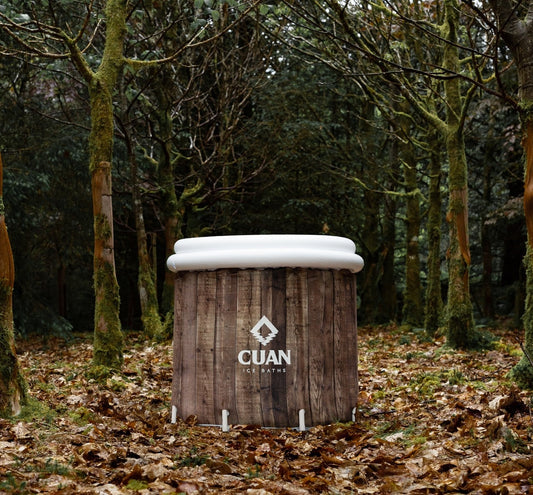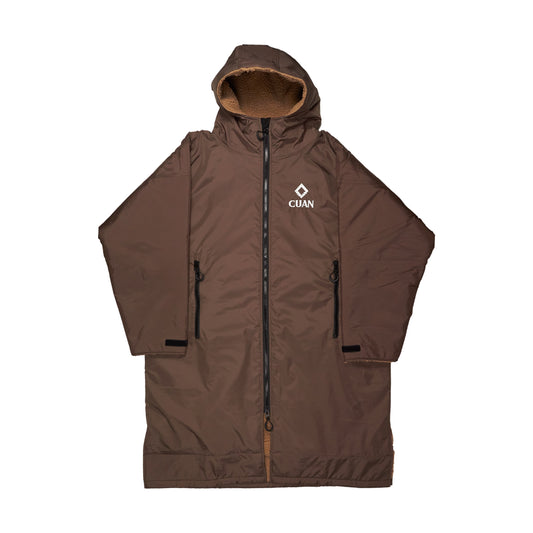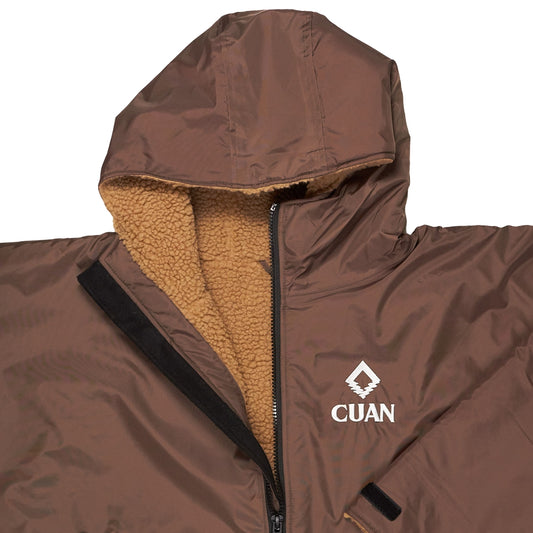Cold Water Therapy Benefits
Properly executed, intentional cold exposure can have a positive impact on both brain and body health.
About cold water therapy
Learning to adapt to the cold is a scientific process that begins and ends with your breath. Initially, your cardiovascular system may react to the icy water by causing erratic breathing. To gradually build up tolerance, start by finishing your hot showers or baths with cold water that gradually decreases in temperature over time. Within a few weeks, your body will adapt and become more tolerant to the cold. As your tolerance increases, you'll gain better control over your breath, maximising the benefits of cold water immersion.
Safety first
Never get into a dangerous body of water. Also, never do deliberate hyperventilation (Whim Hof/Tummo breathing) before or during cold water or any water immersion. Start slow (warmer than colder)—as cold shock is possible; just as with lifting weights or other forms of exercise, you’ll need to find the right temperature for you, yet prioritise safety.
How cold?
Each individual's response to cold exposure is unique, but a good rule of thumb is to push yourself just enough to elicit the thought "this is really cold, but I can handle it safely." Remember, the colder the stimulus, the shorter the exposure time needed. With consistent practice, you can gradually increase your comfort level and confidence in colder temperatures, similar to building strength in the gym or improving your running time.
Recovery
According to a meta-analysis investigating the effects of cold-water immersion on recovery, this method can be highly effective after high-intensity exercise or endurance training. Short intervals of less than 5 minutes of cold water immersion were found to improve muscle power, perceived recovery, and reduce muscle soreness, partly due to a decrease in circulating creatine kinases. However, it's worth noting that cold water immersion, but not cold showers, may limit gains in hypertrophy, strength, or endurance if performed within 4 hours of training. It's recommended to wait at least 6 to 8 hours after training or perform cold exposure before training, unless the goal is solely to recover without any adaptation.
To Increase Energy and Focus
Exposure to deliberate cold triggers a notable discharge of epinephrine, commonly known as adrenaline, and norepinephrine, also known as noradrenaline, in both the brain and body. These neurochemicals produce a feeling of alertness and restlessness, causing the urge to move or vocalise during the cold exposure. Cold causes the levels of these chemicals to remain elevated during and after the exposure, continuing to increase your energy and concentration. Therefore we can apply this to other physical or mental activities beyond the cold exposure.
Increasing Your Mood
Although not applicable to all types of stress, the exposure to cold triggers the prolonged release of dopamine - a potent neurotransmitter known for boosting mood, enhancing focus, attention, and goal-oriented behaviour. Even brief sessions of cold exposure can lead to a lasting surge in dopamine, resulting in sustained elevation of energy, focus, and mood.
Building Resilience & Grit
By accepting the challenge of cold exposure as a meaningful self-directed stressor, you can exercise 'top-down control' over the deeper brain centres that govern reflexive states. This process of top-down control involves the prefrontal cortex, a region of the brain that plays a role in planning and suppressing impulsive behaviour. This control is the foundation of what is commonly referred to as "resilience and grit." Practicing this skill through deliberate cold exposure translates to better coping abilities and a clearer, more focused mind in real-world stressful situations. In essence, the practice of deliberate cold exposure serves as a valuable mental training tool.
Metabolism
When exposed to cold, the body increases its metabolism to generate heat, which leads to burning calories. Although the number of calories burned during cold exposure may not be substantial, the positive effects on the body can be significant. The conversion of white fat (which stores energy) to beige or brown fat (which is highly metabolically active) can help individuals become more comfortable in the cold and trigger further increases in metabolism. This process, known as cold adaptation, allows the body to efficiently produce heat and can lead to sustained improvements in metabolism. By incorporating deliberate cold exposure into your routine, you can promote the conversion of white fat to metabolically active brown fat, resulting in improved energy expenditure and overall health.
A Solid Basic, Science-Supported Protocol
A recommended protocol for deliberate cold exposure is to aim for a total of 11 minutes per week, divided into 2-4 sessions that last 1-5 minutes each, spread throughout the week. It's important to note that the water temperature should be uncomfortable yet safe enough to remain in for a few minutes. While you can certainly do more, sticking to this minimum amount will allow you to reap the benefits of cold exposure. Alternatively, you can also opt for very cold, brief exposures to trigger an adrenaline release, but the 11-minute protocol is based on a recent study that examined a range of effects and provides a solid foundation for ongoing use.
Day or Night?
Following cold exposure, the body temperature rises. The increase in body temperature can make us more alert, whereas a decrease can induce sleepiness. Therefore, it's advisable to incorporate cold exposure earlier in the day, avoiding close proximity to bedtime. If cold exposure impacts your sleep, consider performing it during the earlier hours or avoiding it altogether. While doing it late is an option, it's better to prioritise your sleep if it's being affected.
Optimising Cold Water Therapy
To optimise cold exposure as a resilience training tool, it is recommended to avoid staying completely still while in cold water, as this allows a thermal layer to insulate your body from the cold. Instead, it's suggested to move your limbs while keeping your hands and feet in the water. This breaks up the thermal layer and makes the water feel much colder than if you stayed still. This method can also increase the effectiveness of the cold stimulus without having to lower the water temperature.
Cold Water immersion Therapy and its Role in Dementia Prevention
A study conducted at the University of Cambridge examined UK swimming club members who regularly swam in unheated water during the winter months. The study found that immersion in cold water triggers the release of a protein called RNA-binding motif protein 3 (RBM3) in the brain, known as a "cold-shock protein." RBM3 helps mitigate breakdowns in brain synapses, which can lead to dementia, and may also aid in the formation of new connections. While the research is still in its early stages, the team led by Prof. Mallucci of the UK Dementia Research Institute's Centre at Cambridge University found increased levels of RBM3 in cold-water swimmers but not in those who did not experience cold exposure.
References and further reading
Using Deliberate Cold Exposure for Health and Performance | Huberman Lab Podcast #66
RBM3 mediates structural plasticity and protective effects of cooling in neurodegeneration
Could cold water hold a clue to a dementia cure?
Now it's your turn to reap the benefits!
The CUAN Collection
-
CUAN Ice Bath
Regular price £79.99Regular priceUnit price per -
CUAN Beanie
Regular price £15.00Regular priceUnit price per






